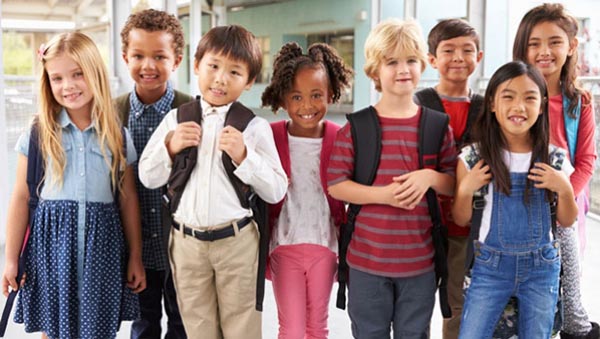From EdSurge
By Cailin Currie
Dec 27, 2021
Between school closures, learning loss, intensified educator burnout, widespread staff shortages and increased stressors at home, it’s been hard not to focus on the negatives in education this year. In fact, it’s human nature to get caught up in what went wrong—an innate survival mechanism called “negativity bias” vigilantly draws our attention to worries and risks so we can better remember and avoid threats.
While I’m appreciative that my ancestors were wary folks, in 2021, I often saw myself and others trapped in this negative mindset, always tallying the losses and waiting for the next bad thing to happen.
However, in my work with educators this year, I began to notice that some were able to metabolize this negativity and keep themselves and their classrooms positive and adaptive despite the obvious hindrances. Interviews with elementary classroom teachers spanning a variety of settings and grade levels revealed that these resilient educators utilized a common strategy: they practiced gratitude in their everyday lives.
As a developmental psychologist, I knew that practicing gratitude, even in small doses, has been shown to increase happiness and positive affect, decrease depression and stress, and support social relationships and physical health, especially sleep. But its full effect didn’t click for me until I saw how others were benefiting from taking the time to note things they were grateful for. I saw how educators were bolstering their happiness by highlighting small wins worth celebrating, such as helping a student grasp a new skill, preparing a nice meal for their family, or carving out an hour for a hobby or exercise. Thus began my journey to strengthen my gratitude muscle to help push back negative thoughts and make space for joy in 2021.
A Small Start to a Big Change
I started small, by noticing and consciously appreciating the little pleasures around me: my warm cup of coffee, that text from a friend, my kitten’s inability to drink water without ignobly dunking his whole head in the bowl. I began naming one thing I was grateful for before joining online meetings and jotting down things that make me happy throughout the day. Instead of feeling frustrated that I had to conduct classroom observations via video conferencing this year, I noticed how grateful I was to still be able to see young learners and reminded myself how immensely appreciative I am of the educators that are supporting their students through all these unprecedented changes. Each night before going to bed, instead of spending my wind-down time making tomorrow’s to-do list, I listed three things I was thankful for.
Faster than I would have thought, I noticed a difference. I felt less dread on Monday mornings because I was bolstered by my appreciation of my company’s flexible scheduling. I was less annoyed with my spouse because I was more aware of all he does to support our family. I found myself able to more easily laugh things off and disengage from a worry-spiral because being aware of all that was going right expanded my perspective and allowed me to view a given concern as one small data point within a much larger constellation of experiences.
On days when it was more challenging to recognize the good, I pushed myself to interact with artifacts I knew would force me to acknowledge the gifts I have. Looking—I mean really looking—at my wedding photo, my diplomas, my grandmother’s necklace, or my nephews’ drawings on the fridge allowed my thankfulness to come forward and my anxieties to take a back seat, if only for a moment.
I also found that once you start practicing gratitude, it doesn’t stay personal; it spills over into your relationships. When I ended a meeting with a quick “thank you for … ,” I didn’t just feel more positive about my work, but I also began receiving more gratitude and offers of help from my colleagues.
As an overly involved auntie, I extended my gratitude practices to include my nieces. During meals or while driving, we ask them to tell us the best part of their day and what they’re looking forward to. With my older niece, we began keeping a gratitude jar, full of little notes containing things we were grateful for. We agreed we can pull them out and read them whenever we need an extra pick-me-up. So far, they do better at identifying the little joys than I do, so if you’re ever struggling to find the positive, I recommend asking a 6-year-old.
What struck me most about my exploration of gratitude this year is how deceptively simple but impactful it can be. I learned that having an appreciative and positive view of life isn’t an innate personality trait or a perspective forged from extreme hardship or privilege. Learning to recognize and acknowledge the gifts and goodness around us is a skill that can be developed with practice and effort, just like other academic or social-emotional skills.
Photo: Live Happy Magazine
Read this and other stories at EdSurge

